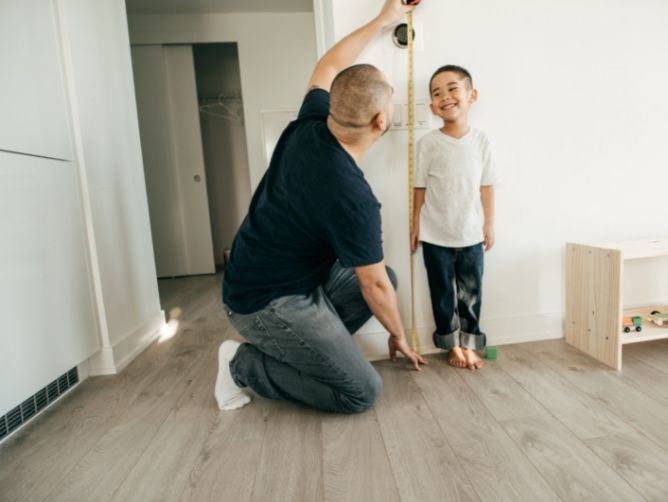Parenting is quite the adventure, filled with its ups, downs, and plenty of learning curves along the way! It’s like embarking on a journey where the terrain is as varied as the ways we choose to navigate it.
There are the main parenting styles that many of us might be familiar with—Authoritative, Authoritarian, Permissive, and Uninvolved. Each has its unique approach, blending varying degrees of warmth, communication, and expectations.
But did you know there are also several other intriguing styles out there like Attachment, Helicopter, Free-Range, Lawnmower, Tiger, and Elephant parenting?
Each of these styles paints a different picture of the parent-child relationship, with its own set of values and methods. So, let’s take a friendly stroll through the diverse landscape of parenting styles, exploring the characteristics and outcomes of each.
The Four Main Parenting Styles
Authoritarian Parenting
- Responsiveness: Low
- Demands: High
- Characteristics:
- Enforces strict rules and expects obedience
- Values discipline and order
- Low open communication
- Outcomes: Children raised by authoritarian parents may be obedient and proficient but might struggle with self-esteem, social competence, and happiness.
Authoritarian parents adopting this style tend to have high expectations and establish firm rules, expecting their kids to follow them without a fuss.
There’s not a lot of room for open dialogue between parent and child in this approach, and stepping out of line usually meets with swift consequences.
The primary focus here is on obedience and structure, and while this might lead to well-disciplined kids, it can sometimes be a bit tough on their self-esteem and creativity.
The idea is to mold kids through clear boundaries and rules, but it’s essential to strike a balance, so the child doesn’t feel overly controlled or restricted.
So, while it has its perks in instilling discipline, a sprinkle of warmth and open conversations can make a world of difference in making the authoritarian parenting style more harmonious and beneficial.
Authoritative Parenting
- Responsiveness: High
- Demands: High
- Characteristics:
- Establishes clear expectations and rules
- Encourages open communication
- Provides support and nurturance
- Outcomes: Children raised by authoritative parents tend to be happy, successful, and well-adjusted, exhibiting high emotional intelligence and social competence.
Authoritative parenting is like the golden middle ground of parenting approaches. Here, parents combine the best of both worlds: they set clear boundaries and expectations, but they also lend an understanding ear to their kids.
Parents don’t just rules, but they also explain the reasons behind these rules. This fosters a sense of understanding and mutual respect. Kids have the room to express their feelings, ask questions, and even negotiate from time to time.
On the flip side, they also learn the value of consequences and responsibility.
Authoritative parents tend to raise confident and resilient children, who are also empathetic and socially adept. Think of this style as firm but fair – like a mentor guiding with wisdom, mixed with a friend’s warmth and approachability.
Permissive Parenting
- Responsiveness: High
- Demands: Low
- Characteristics:
- Few rules or expectations
- Nurturing and lenient
- Treats child more like a friend
- Outcomes: Children raised by permissive parents may have high self-esteem and good social skills but might struggle with self-regulation and responsibility.
Permissive parents are pretty laid-back and lenient. They’re the cool parents who offer a lot of freedom and few rules, choosing to be more of a friend than a traditional parent figure.
Discussions over directives are the norm, and they’re typically super nurturing and warm, preferring to avoid confrontation.
However, it’s like walking a tightrope sometimes—while the easygoing vibe promotes open communication and trust, it might lack the structure and discipline that kiddos need for learning responsibility and self-control.
It’s important to find that sweet spot—maintaining the open, friendly rapport but infusing a bit of structure and guidelines to shape those little independent spirits.
Uninvolved Parenting
- Responsiveness: Low
- Demands: Low
- Characteristics:
- Neglectful and detached
- Lacks attention and expectations
- Low emotional involvement
- Outcomes: Children of uninvolved parents may struggle developmentally and emotionally, experiencing feelings of neglect and having low self-esteem.
Uninvolved parenting is a bit of a tricky one. With this parenting style, there’s an unfortunate lack of responsiveness and communication between the parent and the child.
This style might involve fewer rules and, often, fewer interactions, causing the kiddos to feel a bit neglected. It’s a tough situation as children can miss out on the guidance, support, and nurturing they crave and need to flourish.
It might be unintentional due to parents being overwhelmed with their own issues, or it might be a conscious choice. In any case, kids often crave a bit more attention, love, and structure.
Uninvolved parenting can leave kids feeling lost, so injecting some care, involvement, and positive interactions can make a profound difference in their lives, helping to build their confidence, resilience, and emotional well-being.
Other Parenting Styles
Attachment Parenting
- Responsiveness: High
- Demands: Moderate
- Characteristics:
- Prioritizes emotional availability and responsiveness
- Encourages secure parent-child attachment
- Emphasizes physical closeness and touch
- Outcomes: Children raised with attachment parenting are likely to be emotionally secure, empathetic, and have strong interpersonal relationships but might struggle with independence and resilience.
Attachment parenting is a style that’s all about creating secure attachments. This approach is big on closeness and responsiveness, promoting a strong emotional bond between parents and their little ones.
It’s like parenting with your heart on your sleeve, responding promptly to your child’s needs and focusing on nurturing and love.
Parents practicing this style are often seen wearing their babies, co-sleeping, and breastfeeding, aiming to build a secure, empathetic environment. The idea is to help kiddos grow up feeling loved and secure.
But, it’s good to remember balance; while being tuned into your child’s needs is awesome, it’s also essential to encourage some independence and allow them to explore the world around them. Parents will need to keep the connection strong while giving their children the wings to fly.
Helicopter Parenting
- Responsiveness: Very High
- Demands: High
- Characteristics:
- Overly involved and protective
- Micro-manages child’s life
- Interferes continually with the child’s experiences and problems
- Outcomes: Children of helicopter parents may lack problem-solving skills, experience increased anxiety and stress, and struggle with developing autonomy and resilience.
Helicopter parenting gets its name because, much like a helicopter, parents hover closely, keeping a watchful eye on their kids’ every move.
It’s driven by a well-meaning desire to protect and be involved in every aspect of the child’s life—from schoolwork to playdates and beyond. It’s like being a superparent, ready to swoop in and rescue at the first sign of trouble.
But, here’s the tricky part—while it’s great to be engaged and supportive, being overly involved can sometimes overshadow a child’s sense of independence and self-discovery. It might lead to kiddos feeling a bit smothered and dependent.
So, the key is finding that balance, allowing kids to experience, learn, and grow while still offering a safety net of support and love.
Free-Range Parenting
- Responsiveness: Moderate
- Demands: Low
- Characteristics:
- Encourages independence and self-reliance
- Allows exploration and learning from experiences
- Minimal interference in child’s problems
- Outcomes: Children raised by free-range parents tend to be self-reliant, resilient, and confident but may encounter risks due to lack of supervision and guidance.
Free-Range parenting gives kids the freedom to roam, learn, and make mistakes, all within the safe boundaries of love and guidance.
Parents adopting this style believe in equipping their young ones with the tools and knowledge to navigate the world and then step back to let them soar. It’s like teaching them to ride a bike and then letting go of the handles.
But, of course, the challenge is to ensure that this freedom doesn’t turn into neglect. Balancing independence with support and guidance helps in nurturing responsible, self-reliant individuals who are not afraid to take risks and learn from their experiences.
Lawnmower Parenting
- Responsiveness: High
- Demands: Moderate to High
- Characteristics:
- Removes obstacles from the child’s path
- Solves problems for the child
- Avoids allowing children to face consequences
- Outcomes: Children of lawnmower parents may struggle with coping mechanisms, problem-solving, and resilience and might lack a sense of responsibility and self-reliance.
Imagine a lawnmower paving a clear path by mowing down all the obstacles—Lawnmower parenting is somewhat similar. Lawnmower parents are all about smoothing out the road for their kiddos, eliminating challenges and obstacles from their path.
Parents like this want to prevent their kids from facing difficulties or disappointments. The intent here is heartfelt; parents want to shield their little ones from the rough and tumble of life.
However, by removing all hurdles, we might inadvertently hinder their ability to deal with challenges and setbacks. It’s essential to allow kids to experience a bit of life’s bumps and learn the valuable art of resilience and problem-solving.
The dance is in knowing when to step in and when to let them navigate. It’s a juggling act of love, protection, and empowerment.
Tiger Parenting
- Responsiveness: Low to Moderate
- Demands: Very High
- Characteristics:
- High expectations of achievement
- Strict and demanding
- Focused on discipline and success
- Outcomes: Children of tiger parents may achieve high academic success but may struggle with stress, anxiety, and social and emotional well-being.
Tiger parenting is synonymous with high expectations and strict rules, with a focus on academic achievement and extracurricular success. It’s like having a relentless personal coach who pushes you to be your best version, aiming for excellence and discipline.
Parents embracing this style may have a structured environment and precise goals for their children. While the emphasis on hard work and achievement can help in sculpting disciplined and successful individuals, the intense pressure can be a bit overwhelming.
It’s crucial to balance the pursuit of excellence with a dose of warmth, understanding, and some room for relaxation and failure. After all, it’s important to nurture a sense of achievement and well-being, not just the desire to reach the pinnacle of success.
Elephant Parenting
- Responsiveness: High
- Demands: Moderate
- Characteristics:
- Nurturing and protective
- Encourages gradual development
- Values emotional connectivity and encouragement
- Outcomes: Children of elephant parents may develop a strong sense of security and emotional intelligence but might struggle with independence and self-motivation.
Elephant parenting is a style that’s nurturing and protective, much like the majestic elephants in the wild. Elephant parents are all about nurturing, shielding, and enveloping their little ones in love and warmth.
It aims to provide a secure, loving environment where kids feel cherished and valued. There’s a focus on emotional security and allowing kids to be, well, kids—letting them play, explore, and enjoy their childhood without the pressure of premature adulthood.
While this nurturing cocoon is a source of comfort, it’s essential to blend it with elements of independence and resilience. After all, the dance of parenting is about mixing love and protection with the right dose of freedom and challenges.



